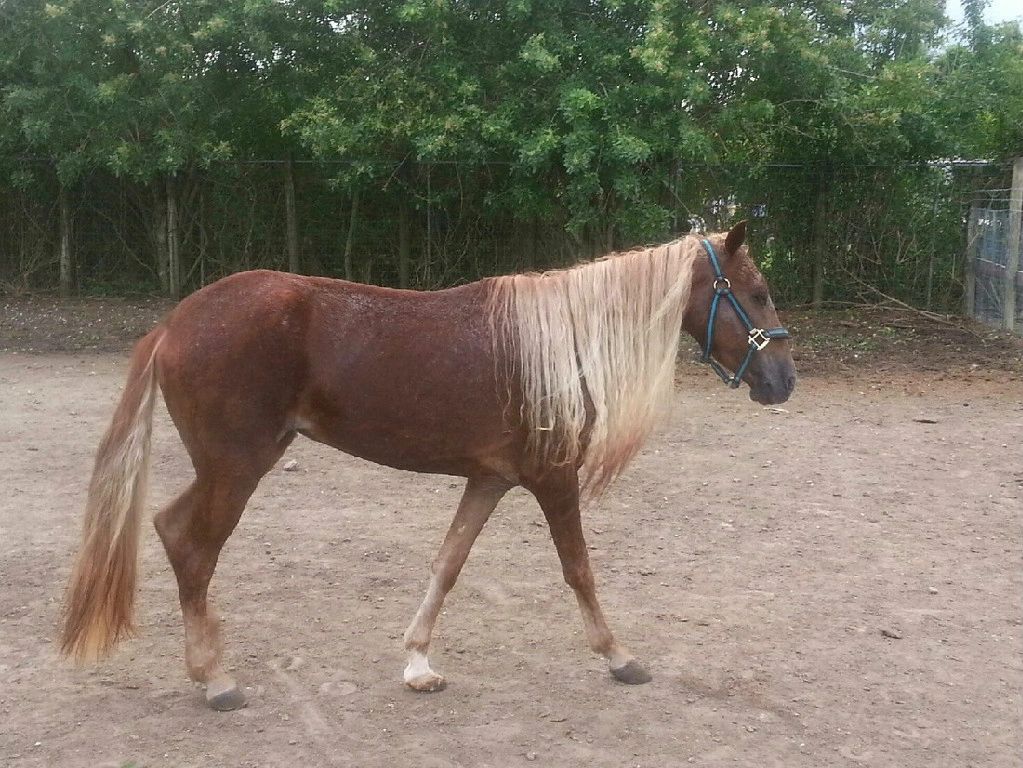Research
Pemphigus Foliaceus: A Rare and Potentially Lethal Disease in Horses
Our featured filly, Acuarela, was diagnosed with Penphigus Foliaceus when she was a little over a year. I struggled to save her life from the onset and under the care of her veterinarian, Dr. Bethany Cody, she is now almost 5. During the early stages of her disease, not knowing what she was suffering from, I supplemented her feed with Omega 3 and fatty acids, multivitamins rich in B-12 and iron, gave her prescribed antibiotics and anti-histamines, and the best feeds available. I bathed her on a daily basis to bring down her fevers and make her more comfortable with her skin lesions. I tried everything! She is now in remission and living the life of a normal horse. She is trimmed and shoed every other month to prevent hoof lesions since this disease may also lead to laminitis. There is still work to do and research to conduct but my hope is to someday find a cure for this debilitating disease which in most cases leads to having to euthanize the horse.
PF manifests with hives, blisters, and scaling throughout the whole body, high fevers, extreme weight loss and swelling of legs. It is often confused with dermatitis or fungus, allergies and infections. After constant observation, skin tests, biopsies and blood work, Dr. Cody diagnosed her with PF and began her treatment with dexamethasone to which she has always responded well. The hives now appear once or twice a year at which time she is goes back into treatment. However, every episode has been less severe than the previous one and she has gained and kept her weight. She loves to run and spend time with the mini horses she grew up with.
“Pemphigus foliaceus (PF) is an uncommon but potentially life threatening cause of skin disease in horses. It is an autoimmune disorder in which the horse makes antibodies against his own skin. Normally, antibodies help fight infection and keep the horse healthy. But with PF, the horse’s body creates antibodies against its own tissues, and they destroy the bonds that hold the horse’s skin cells together. When these bonds break, the skin cells separate from one another, leaving a space that fill with fluid and forms a blister or pustule. These blisters and pustules arise close to the horse’s skin surface and are very fragile; therefore, they rupture quickly. This leads to the common signs affected horses’ exhibit: oozing, crusting, scaling, and erosions” (Rashmir-Raven, 2012).
Like some of the horses affected by PF, Acuarela’s signs began with hives all over her body and extremely high fevers, sometimes of 106 degrees. She had to be bathed or watered down several times per day, including cold winter nights. Her lesions began in her face, coronary band and abdomen and rapidly spread all over her body. She developed lower leg swelling, with extremely hypersensitive, itchy, scaly skin. At times, her swelling was so bad that she would have a hard time walking or getting up from the ground and I had to lift her. Like many horses with PF she exhibited signs of depression, lethargy, anorexia, and weight loss.
The cause of PF is still unknown. Some experts propose that some of the inciting factors are black flies and sensitivity to Culicoides gnats. Most of the cases worsen during hot months where seasonal allergens may play a significant role. Veterinarians also believe drugs such as antibiotics, dewormers, vaccines, and some supplements may have triggered a number of PF cases. So far, genetic factors have not been implicated, however, a genetic predisposition was found in other species. It is highly suggested that veterinarians rule out other diseases by taking smears from the blisters and perform skin biopsies. Early diagnosis of the disease is important to prevent a delay in the proper treatment. Acuarela’s condition evolved a couple of months after a full set of vaccines were administered.
“Treatment consists of long-term glucocorticoid administration (prednisolone or dexamethasone), omega fatty acid and vitamin E supplementation, sunlight restriction, and addressing any underlying causative factors such as fly bite allergies, drug administration, and diet. Horses that do not respond to these approaches might require treatment with injectable gold salts, azathioprine, and/or oral pentoxifylline. Bathing the horse in cool water might make him more comfortable. Rarely, young horses with PF might recover on their own, but most horses will require long-term if not lifelong treatment. Younger horses also tend to have less severe disease than older horses, respond better to treatment, and might remain in remission even after treatment is withdrawn. Unfortunately, about 50% of horses that initially respond to treatment relapse—some immediately, others after several years. In general, horses become progressively less responsive to treatment with each relapse. Horses are frequently euthanized when treatments fail, if they develop laminitis secondary to treatment, or if treatment costs become prohibitive,” Rashmir-Raven, 2012).

